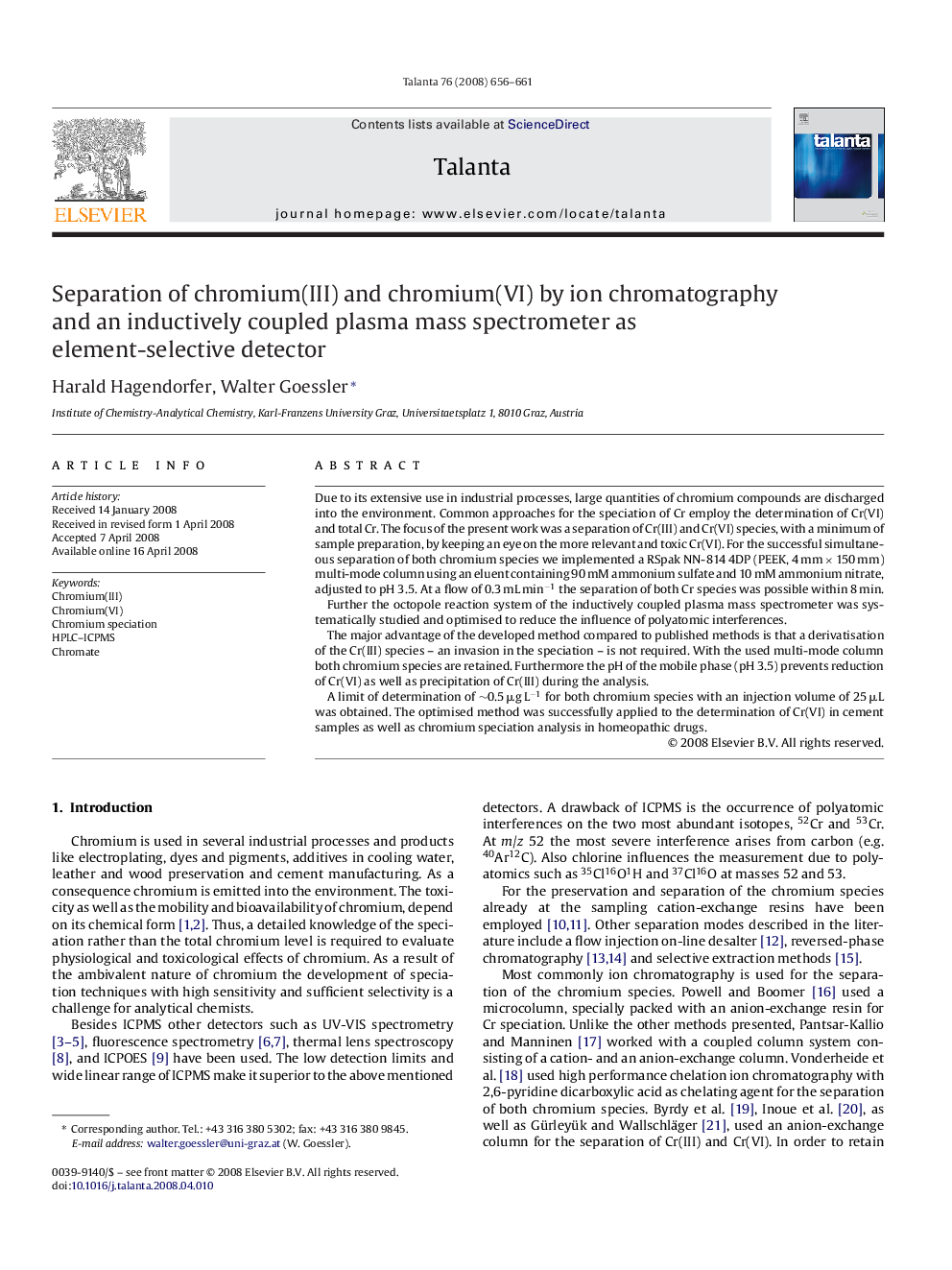| Article ID | Journal | Published Year | Pages | File Type |
|---|---|---|---|---|
| 1243538 | Talanta | 2008 | 6 Pages |
Due to its extensive use in industrial processes, large quantities of chromium compounds are discharged into the environment. Common approaches for the speciation of Cr employ the determination of Cr(VI) and total Cr. The focus of the present work was a separation of Cr(III) and Cr(VI) species, with a minimum of sample preparation, by keeping an eye on the more relevant and toxic Cr(VI). For the successful simultaneous separation of both chromium species we implemented a RSpak NN-814 4DP (PEEK, 4 mm × 150 mm) multi-mode column using an eluent containing 90 mM ammonium sulfate and 10 mM ammonium nitrate, adjusted to pH 3.5. At a flow of 0.3 mL min−1 the separation of both Cr species was possible within 8 min.Further the octopole reaction system of the inductively coupled plasma mass spectrometer was systematically studied and optimised to reduce the influence of polyatomic interferences.The major advantage of the developed method compared to published methods is that a derivatisation of the Cr(III) species – an invasion in the speciation – is not required. With the used multi-mode column both chromium species are retained. Furthermore the pH of the mobile phase (pH 3.5) prevents reduction of Cr(VI) as well as precipitation of Cr(III) during the analysis.A limit of determination of ∼0.5 μg L−1 for both chromium species with an injection volume of 25 μL was obtained. The optimised method was successfully applied to the determination of Cr(VI) in cement samples as well as chromium speciation analysis in homeopathic drugs.
